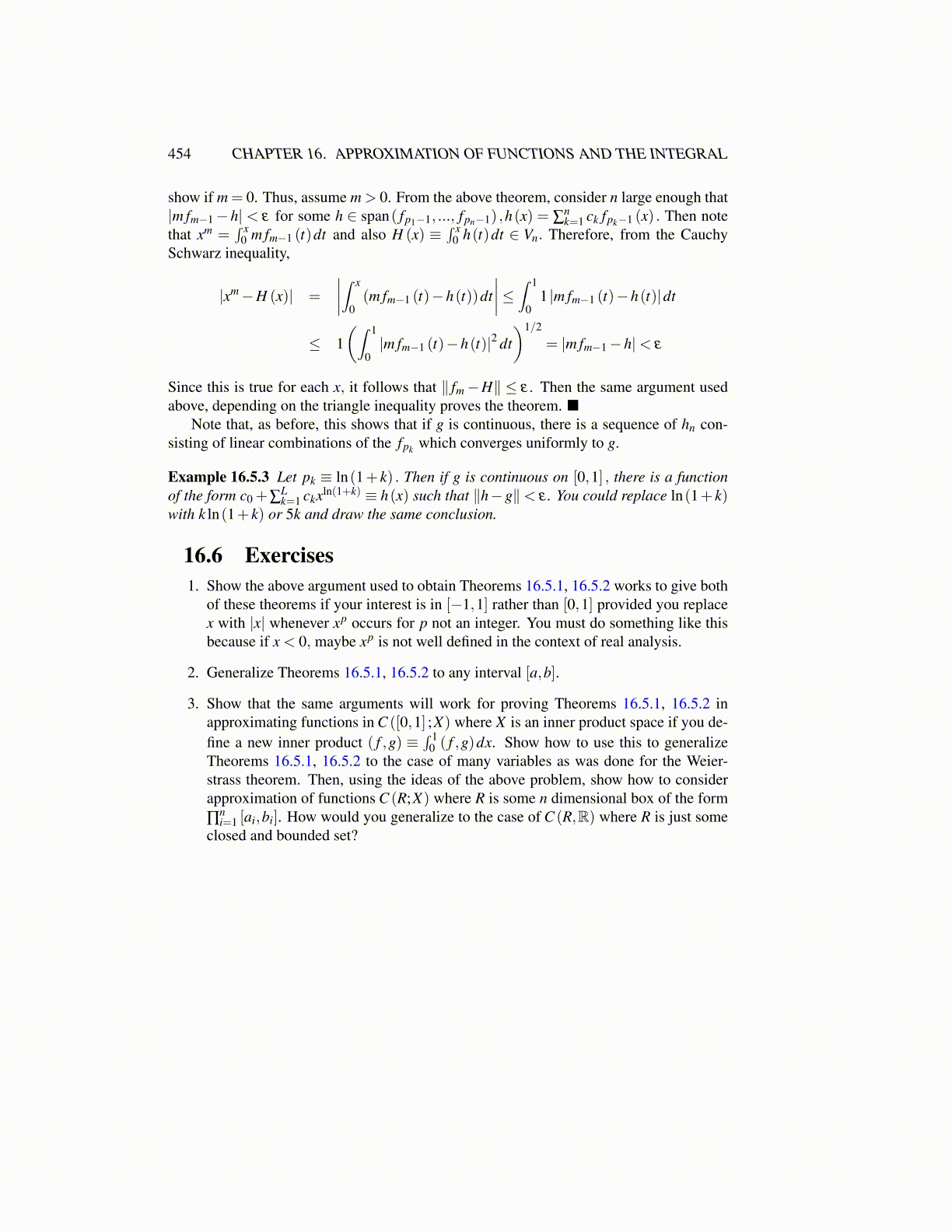
454 CHAPTER 16. APPROXIMATION OF FUNCTIONS AND THE INTEGRAL
show if m = 0. Thus, assume m > 0. From the above theorem, consider n large enough that|m fm−1−h| < ε for some h ∈ span( fp1−1, ..., fpn−1) ,h(x) = ∑
nk=1 ck fpk−1 (x) . Then note
that xm =∫ x
0 m fm−1 (t)dt and also H (x) ≡∫ x
0 h(t)dt ∈ Vn. Therefore, from the CauchySchwarz inequality,
|xm−H (x)| =
∣∣∣∣∫ x
0(m fm−1 (t)−h(t))dt
∣∣∣∣≤ ∫ 1
01 |m fm−1 (t)−h(t)|dt
≤ 1(∫ 1
0|m fm−1 (t)−h(t)|2 dt
)1/2
= |m fm−1−h|< ε
Since this is true for each x, it follows that ∥ fm−H∥ ≤ ε . Then the same argument usedabove, depending on the triangle inequality proves the theorem. ■
Note that, as before, this shows that if g is continuous, there is a sequence of hn con-sisting of linear combinations of the fpk which converges uniformly to g.
Example 16.5.3 Let pk ≡ ln(1+ k) . Then if g is continuous on [0,1] , there is a functionof the form c0 +∑
Lk=1 ckxln(1+k) ≡ h(x) such that ∥h−g∥< ε . You could replace ln(1+ k)
with k ln(1+ k) or 5k and draw the same conclusion.
16.6 Exercises1. Show the above argument used to obtain Theorems 16.5.1, 16.5.2 works to give both
of these theorems if your interest is in [−1,1] rather than [0,1] provided you replacex with |x| whenever xp occurs for p not an integer. You must do something like thisbecause if x < 0, maybe xp is not well defined in the context of real analysis.
2. Generalize Theorems 16.5.1, 16.5.2 to any interval [a,b].
3. Show that the same arguments will work for proving Theorems 16.5.1, 16.5.2 inapproximating functions in C ([0,1] ;X) where X is an inner product space if you de-fine a new inner product ( f ,g) ≡
∫ 10 ( f ,g)dx. Show how to use this to generalize
Theorems 16.5.1, 16.5.2 to the case of many variables as was done for the Weier-strass theorem. Then, using the ideas of the above problem, show how to considerapproximation of functions C (R;X) where R is some n dimensional box of the form∏
ni=1 [ai,bi]. How would you generalize to the case of C (R,R) where R is just some
closed and bounded set?